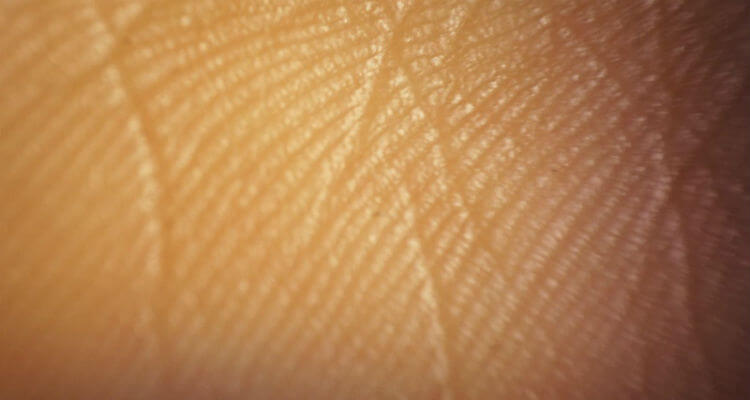New Technologies That Could Give Sexbots Ultra-realistic Skin
Soon our artificial companions will both look and feel remarkably human.

We’re all aware that lifelike robots, particularly those designed for sexual pleasure, are getting more and more sophisticated practically every day.
Though manufacturers have put lots of work into making these sexbots look and feel as close as possible to humans, there’s still a lack of responsiveness to them.
A large part of this is that while their outer coverings may resemble human skin, sexbots can’t actually sense anything through it, which limits how lifelike they can be when interacting with their users.
Now, though, we can report that they might be able to do that in the future, because of three unique research projects aiming to create artificial skin.
Sensor skin
According to a report on the science site Nature, Hong Kong Polytechnic University and Northwestern University researchers have created a form of artificial skin, packed with miniature sensors and actuators, that gives the wearer a remarkably realistic haptic illusion of being in physical contact with another person.
Though their project is focused on using their sensor skin to enhance augmented and virtual reality experiences, it doesn’t take a huge leap of imagination to see how it could benefit sexbot construction.
For instance, they could receive all sorts of data through skin contact—from stroking a cheek to a passionate kiss—and then be able to respond much more realistically.
For those who want solely erotic experiences with a sexbot, this may not sound like a huge development. But for others who want more—even desiring more companionship and realism—this new skin could be just what they’ve been waiting so long for.
Welcome to ‘Skin-On’
Led by Marc Teyssier, a group of researchers has also just announced its own take on sensitive, artificial skin.
Called “Skin-On,” it uses that old staple of sex doll construction, silicone—specifically a type called Dragon Skin—but Teyssier’s team added their own unique spin on it by embedding a mesh array of electrodes into it.
As with the work from the Hong Kong team, the result is that ‘Skin-on” responds to all kinds of haptic contact, including being touched, pinched, and even tickled.
Talking to The Next Web, Teyssier spoke of his work and the goal of making robots responsive to touch:
There is a long history of research into the design of artificial skin in the field of Robotics, either to help with environment exploration, or to endow robots with human-like sensing capabilities. Artificial skin is however usually designed with aesthetic and safety requirements in mind, rather than for harvesting interactive properties of the skin that are specifically useful for human-computer interaction.
And interaction is what Teyssier is all about, demonstrating a proof-of-concept that his “Skin-On” can be used to operate a smartphone as well, in a bit of possible foreshadowing, a toy robot.
While the commercial and obviously even more sexual possibilities are pretty much endless, Teyssier’s is much more interested in allowing his technology to be played with, allowing anyone to use “Skin-On” to explore haptic feedback.
For instance, he is totally transparent about what went into the development of his skin technique, even offering step-by-step directions and saying that he will soon be releasing open-source software he developed for it.
As is so often the case with other technologies, this encouragement for others to tinker could be the key to seriously ramp up interest and maybe even lead to some new technological leaps in types of responsive, sexbot skin.
3D-printed skin

Lastly, we come to an approach that, while fascinating, probably won’t be commercially available for quite a few years. Though when it is, it could pretty much change everything about how sexbots are manufactured and most of all enjoyed.
The Rensselaer Polytechnic Institute (RPI), while working with Yale University, is reported to have developed a novel technique that uses human cells and what could best be called a medical 3D printer to reproduce something very close to actual skin.
That alone is impressive. What’s even more so is that this technique doesn’t just create skin, but the blood vessels under the surface as well.
With an aim to treat burn victims or others in need of skin grafts, the team sought to overcome a serious problem with previous procedures: because they were without a source of blood, applied tissue would simply die and have to be removed.
This new technique, however, means that this new skin can receive things like oxygen and can even eventually replace the lost tissue.
Feeling like tomorrow
To be honest, using something like human cells would be a big, yet problematic, step. But there’s no reason why we can’t dream that someday, perhaps via genetically engineered animal cells, sex dolls might be given skin that looks as well as responds just like that of a human.
In the meantime, through work being done by the likes of the Hong Kong team and Teyssier, we could much sooner be seeing a new era of how all forms of pleasure technology will be created—not just sexbots.
A time where our devices and artificial companions won’t just look erotically enticing but would also respond as never before: feeling us as much as we feel them.
Image sources: Marc Teyssier, MarguelGtz
Leave a reply
You must be logged in to post a comment.

















